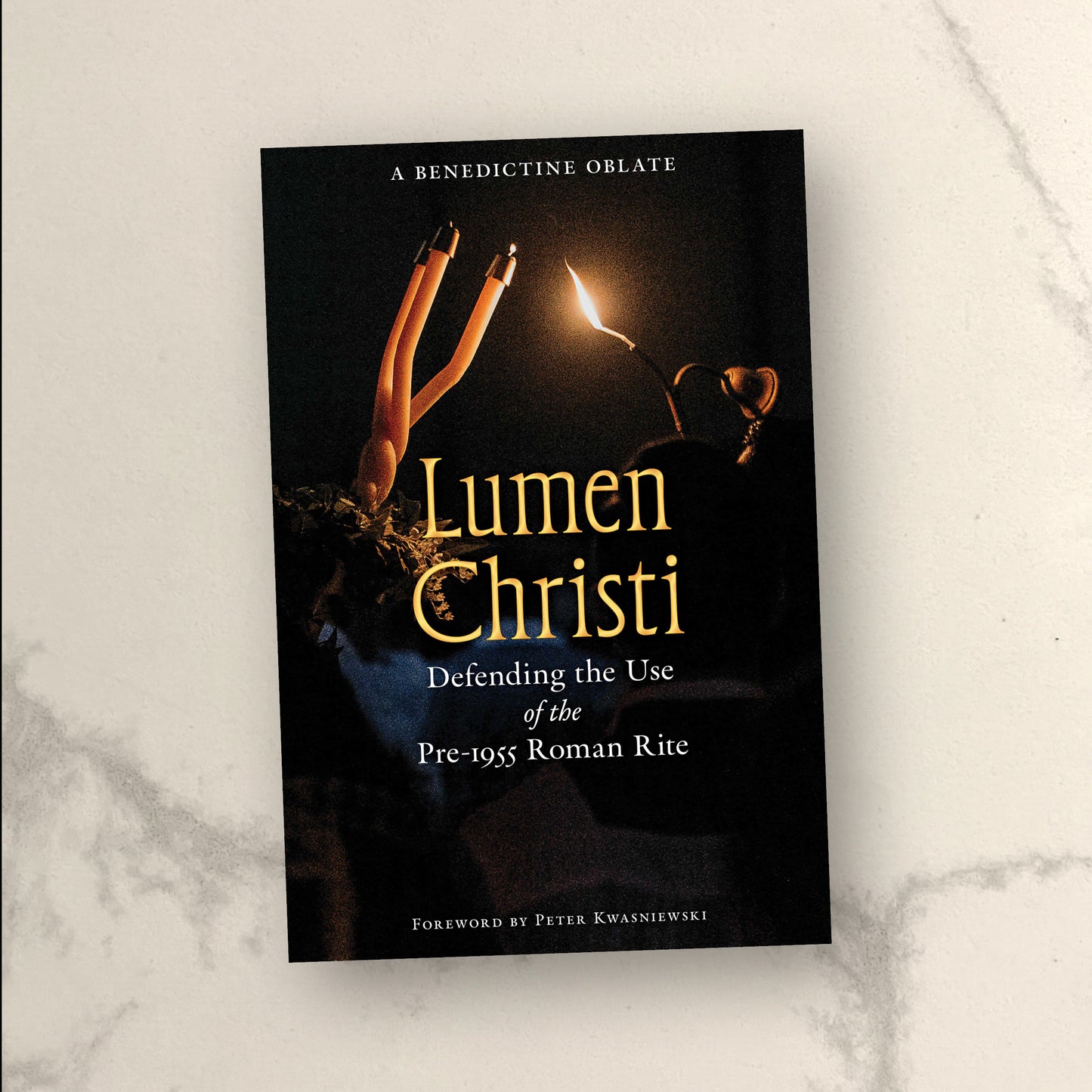The Roman rite, once the serene inheritance of countless saints, was not abruptly overturned in the late 1960s, as a conventional traditionalist narrative suggests; instead, it was subjected to a process of gradual dismantling in the mid-twentieth century, prior to the coup de grâce delivered by Paul VI’s Consilium. Among the most significant turning points was the imposition of a “reformed” Holy Week in 1955 under Pope Pius XII. This was no gentle pruning or “restoration” but a momentous rupture, a deliberate reshaping of ancient ceremonies to fit the mind of modern man, an attempt to reimagine and improve upon the past rather than receiving it humbly as the treasure it is. As a result, the 1962 liturgical books bear the wounds of earlier deformations and anticipate wounds yet to come.
Lumen Christi confronts these uncomfortable truths, not in a spirit of nostalgia but in the name of intellectual honesty and historical clarity. Authentic liturgical development never came from panels of experts wielding scissors and glue; it emerged from the living faith of the Church, slowly refined in its expressions over the course of centuries. In its magnificent Holy Week, its rich calendar, and its undiminished prayers and ceremonies, the classical Roman Rite is no museum piece left behind in the march of progress. It is the Latin Church’s living liturgy, still loved by many souls, and ripe for reintroduction wherever the usus antiquior is—or, in a happier future, will come to be—offered in our churches. What was sacred to our forefathers remains sacred and great for us today: such is the conviction that animates the pages of Lumen Christi.
With a panoply of historical, liturgical, canonical, and theological arguments, Lumen Christi helps readers to understand what is at stake in the restoration of the once and future Roman Rite and provides practical guidance in accomplishing it. Four ample appendices round out the book: permissions needed (or not needed) for the use of earlier liturgical books; charts of all the changes made to the missal and breviary between 1955 and 1962; a step-by-step plan for transitioning at the parish level from the 1962 to the pre-1955; translations of key liturgical documents.
In the end, our task is simple: to emerge from the cave of modern liturgical innovations into the full light of tradition. This book is an indispensable roadmap for that journey.


